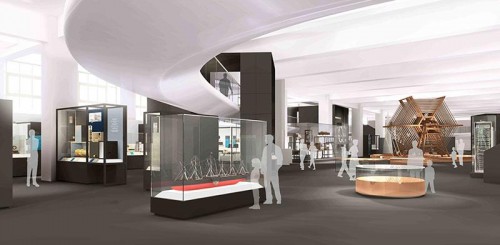This October, the Science Museum will launch what it says will be the first permanent gallery in the UK dedicated to the history of information and communication technologies.
Which then makes me wonder what their existing long-running gallery devoted to communications technology was?
From the first transatlantic telegraph cable that connected Europe and North America in minutes rather than weeks, to the advanced computing power of the modern smartphone, the new gallery will look at the impact of developments in communication technology on all our lives.
More than 800 objects from the Science Museum collections will be put on display.
Information Age will explore how our modern connected world was created through six networks, the electric telegraph, the telephone exchange, radio and television broadcasting, satellite communications, computer networks and mobile communications.
- Thomson’s original galvanometer used to receive the first telegraph messages sent across the Atlantic between President Buchanan and Queen Victoria in 1858
- The original Marconi radio transmitter that made the first public broadcast in 1922 with the famous words ‘This is 2LO calling’ – announcing the arrival of the BBC and the birth of British broadcasting
- The intimate oral histories of women who operated our telephone exchanges until the introduction of the automatic dial
- Two of the world’s fastest supercomputers in the 1960s, the Russian BESM-6 and the American CDC 6600, and how computing became the front line of the Cold War
- The development of two generations of satellite communication technology told through the first worldwide TV broadcast starring the Beatles in 1967 and the crucial role of GPS satellites first used to help coalition forces navigate the desert during the first Gulf War
- The NeXT cube, the original machine used by Sir Tim Berners-Lee to design the World Wide Web in 1989 and start a new age of instant access to information
At the centre of the gallery will sit the six-metre high aerial inductance coil from Rugby Radio Station. This enormous and object resembles a series of giant spider webs and was once part of the most powerful radio transmitter in the world and was donated to the Science Museum by BT.
The gallery will open on 25 October 2014.








What about the former BT Museum in Blackfriars? A little known gem that was a wonderful place to explore.
What made me feel old the last time I went to the Science Museum was looking in a display case and seeing electronic toys I had as a kid.